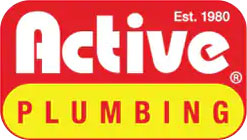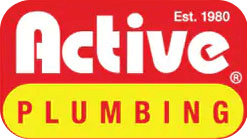HOW TO INSTALL A NEW NATURAL GAS CONNECTION
Are you thinking installing a natural gas connection in your home? Some local gas businesses will install a new gas line for free if you bought a gas heater or a gas water heater and a gas appliance like a dryer or stove. Otherwise, your gas company may install the connection at a fixed rate, then include the charges to your gas bill and to allow you to make monthly payments. In some areas.
You will need to contact your local gas supplier to have the gas connected.
You will also have to contact a local plumber such as Active Plumbing to have your house pipes install for all the new gas appliances you require such as a gas stove hot water heater central gas heating etc.
PREPARATION
Most domestic gas lines use between use 20mm or 25mm pipes for natural gas , although large commercial projects or for longer runs of pipe often require larger sized pipe, also pipe sizing is govern by the available gas pressure in the street gas main.
NEW GAS CONNECTION
Once you have made arrangements with your local gas supplier and you have had a gas meter fitted to your property Active plumbing will install new pipe work and fittings, install your new gas appliances and connect the pipe work to your new gas meter, we will then test the installation and commission all the new gas appliances.
EXTEND EXISTING GAS CONNECTION
We may need to extend your existing gas line by fitting the valves and pipe lengths required to add a gas connection that will reach your preferred appliance. We may install plastic pipes or install copper pipes and fitting depending where the gas line is to run. We will install all the pipes and fitting needed. We will need to connect to your existing house pipes. This is done by joining to the existing material if it is galvanized pipe we will need to cover the threads of the pipe ends with pipe glue or tape. This is crucial to ensuring an airtight fit. When you are using tape, or special connectors, we will usually start by assembling some parts of your gas connect in your garage or shop, when using copper components using silver soldering then transferring them to the area where your gas connection runs. We would use crimpers to join the components when using plastic pipes and fittings and special adaptor to join to your existing installation when joining to the meter we would use copper pipe.
When we connect the end of your new gas line to the appliance we will use copper or a flexible pipe. Often a regulator will need to be fitted when installing stoves ovens and cook tops, similar to other connections, threads onto the end of the gas pipe on the appliance with pipe glue or tape. Typically, you don’t need the pipe glue or tape for the final attachment to the appliance itself. We then need to check for leaks this can be done by using a bubble leak detector if there is a leak applying a mixture of water and dish liquid over each seam in your gas line, till the leak is found and if bubbles appear, there’s a leak. We then need to disconnect that section, remove the pipe glue, and reattach with new sealant or replace the section re silver solder or replaced the connections and re test Afterwards, turn the gas back on. Test your appliance to check if the gas is flowing correctly.

